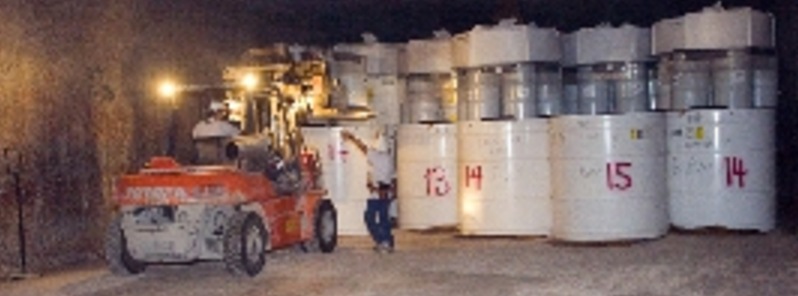Rock salt for isolating nuclear waste not as capable as thought

A new research from The University of Texas at Austin shows that rock salt, used by Germany and the United States as a subsurface storage for nuclear waste, might not be as impermeable as thought or as capable of isolating nuclear waste from groundwater in the event that a capsule or storage vessel failed.
A team of researchers from The Texas University have created 3D micro-CT imaging of laboratory experiments to show that the rock salt can become pervious. Their finding published on the November 27 in Science, mostly appertains for oil and gas operations and also for nuclear waste storage.
"This new information tells us, that there is a chance of permeability and it should be attentively discussed – where and how to preserve nuclear waste. If it's an existing nuclear waste storage site, than you may want to re-evaluate this according a new information," said Maša Prodanovic, assistant professor in the Department of Petroleum and Geosystems Engineering.
Generally salt is used to block fluid flow in shallow depth, but scientists have been suspecting for a long time, that salt becomes pervious at greater depth. Professor James E. Gardner of Jackson School has proved this theory by laboratory experiments with synthetic rock salt.
Cockrell School doctoral student Soheil Ghanbarzadeh tested the idea against field data from natural rock salt. During summer internships he examined oil and brine distributions in rock salt in a set of 48 hydrocarbon wells owned and operated by Statoil. The observed fluid distributions confirm that salt indeed becomes permeable at greater depth. However, the researchers were surprised to find that fluids were sometimes able to flow through the salt at shallow depth.
While studying the case, they came to an idea and explained that the main culprit might be a deformation of rock salt. Deformation can stretch the tiny isolated pockets of brine that form between salt crystals and link them into a connected pore network that allows fluid to move.
Although this work was originally motivated by the desire to evaluate rock salt as a hydrocarbon reservoir seal for the oil industry, the conclusions may have important implications for nuclear waste storage. Previous work on salt permeability has focused on the cracks induced by the creation of the nuclear waste repository itself. The observations reported by the study, however, demonstrate that undisturbed rock salt can become permeable.
"The main thing in this case is that salt can develop permeability even in absence of mining activity – further hard work is immutable to study what amount of flow can occur," said assistant professor Marc A. Hesse of the Jackson School's Department of Geological Sciences.
The interest in rock salt as a permanent storage was a result of building a permanent central repository under Nevada's Yucca Mountains, but that proposal has stalled because of political and regulatory hurdles. So the findings of the team from UT Austin provide a timely reminder that rock salt is a dynamic material over long timescales.
Featured image: Storage of radioactive waste at WIPP. Credit: DOE

The alarming situation of radiation contamination in the environment from nuclear power plant emissions, accidents and waste was predicted long ago. The increases in cancers worldwide is evident. Thank you Sara Shannon for researching and writing Radiation Protective Foods which provides information on how to protect ourselves and family from the increasing levels of ionizing radiation damage. Her 2014, post-Fukushima edition is concise and to the point and includes important supplements to boost the immune system.